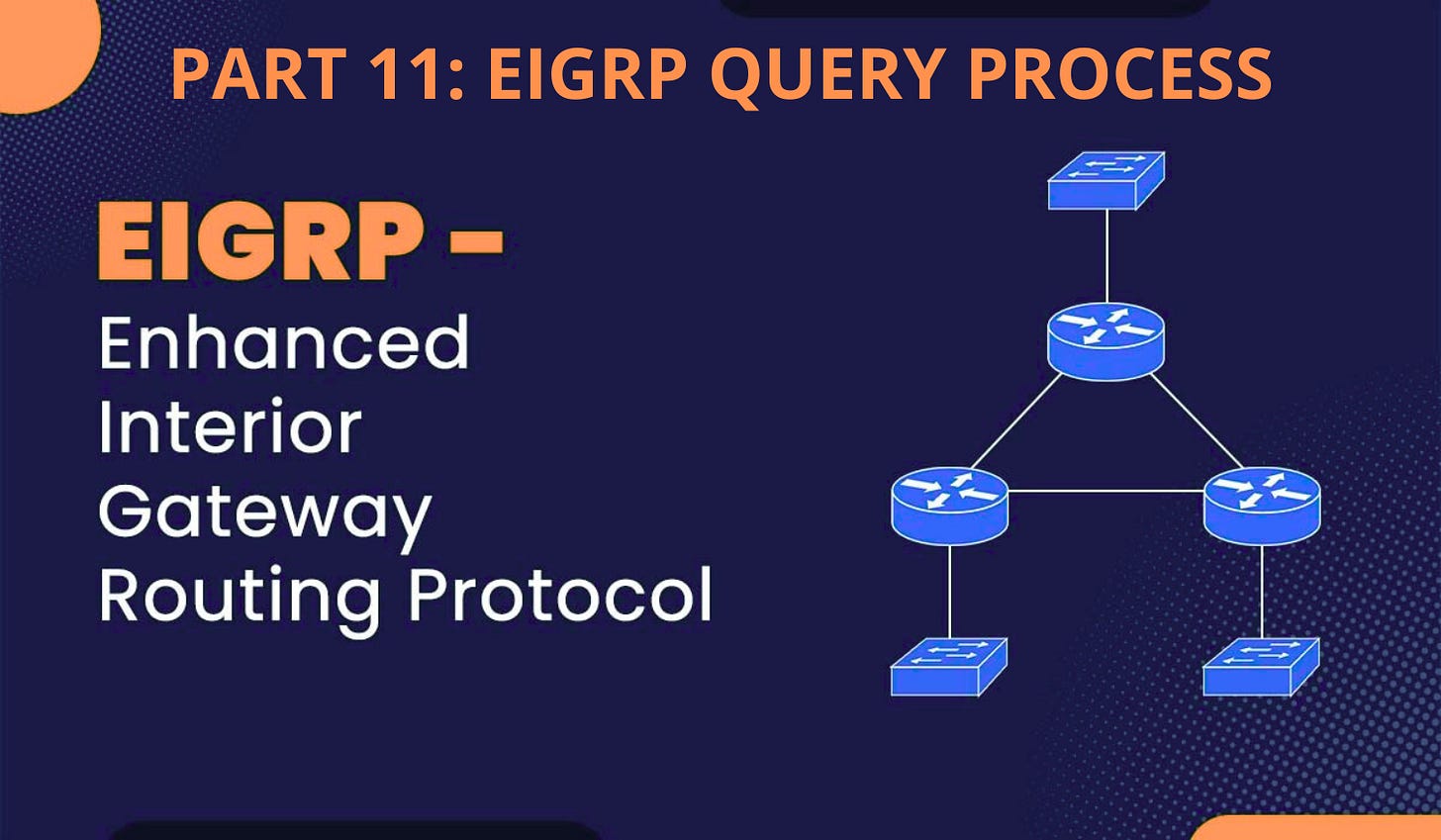PART 11: EIGRP Query Process
Enhanced Interior Gateway Routing Protocol
The EIGRP query process is a crucial mechanism for handling route failures and network convergence. When an EIGRP router loses a route, it initiates a structured process to either find an alternative path or confirm the route is truly unavailable.
The Query Process Workflow
When an EIGRP router loses a route (typically when the next-hop becomes unreachable), it follows these steps:
Active State Initiation:
The router marks the route as "Active" in its topology table
It sends Query messages (Type 3) to all EIGRP neighbors except through the interface where the route was lost
The Active Timer starts (default: 3 minutes)
Downstream Router Response Options:
If the downstream router has never learned about this route: It immediately sends a Reply (Type 4 EIGRP Packet) indicating it has no information
If the downstream router has the route in its routing table: It sends a Reply with itself as the next hop
If the downstream router previously knew the route but it is lost now: It queries its own neighbors and defers replying until it receives all responses
Reply Collection:
The originating router must collect replies from all neighbors it queried
Only after receiving all replies, it calculate a new successor or declare the route unreachable
All Reply packets must be acknowledged
Stuck-in-Active (SIA) Condition
The SIA condition occurs when a router fails to receive replies to all its queries within the Active Timer period. This creates a potentially disruptive situation.
Legacy Behavior (IOS 12.x)
In older IOS versions, the SIA handling was rather severe:
The router would mark the unresponsive neighbor as "Stuck in Active"
It would reset the neighbor relationship
This triggered additional route recalculations for all routes learned from that neighbor
The neighbor relationship would be re-established upon receiving the next Hello packet
Improved Behavior (IOS 15.x)
Newer IOS versions implement a more graceful approach:
After half the Active Timer expires (1.5 minutes by default), the router sends an SIA-Query
This gives the downstream router a chance to respond with an SIA-Reply
The SIA-Reply indicates the downstream router is still processing the original query
This prevents unnecessary neighbor relationship resets
Query Process Characteristics
Important technical aspects of the query process include:
Query packets are sent as multicast on shared media like Ethernet
All Query packets must be acknowledged
If an acknowledgment isn't received, the sender retransmits as unicast
Reply packets also require acknowledgment
The querying router must collect all replies before calculating new paths
Optimizing Convergence
Several techniques can improve EIGRP convergence and minimize SIA conditions:
EIGRP Stub Routers:
Configure leaf/branch routers as stubs
Stub routers will not be queried for routes they don't have
This significantly reduces query scope in hub-and-spoke topologies
Route Summarization:
Implementing summarization at strategic points limits query propagation
If a component route fails, queries only propagate within the summarization domain
Adjusting Active Timer:
The Active Timer can be reduced (commonly to 1 minute) in stable networks:
# Numbered mode
Router(config-router)# timers active-time 60
# Named mode
Router(config-router-af-topology)# timers active-time 60



